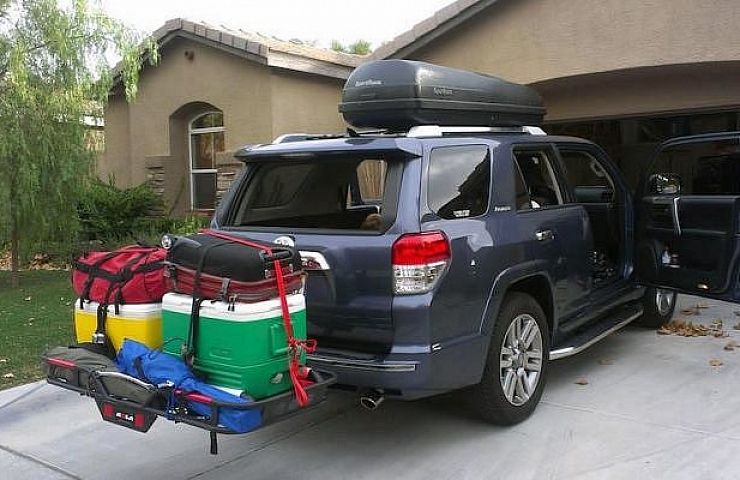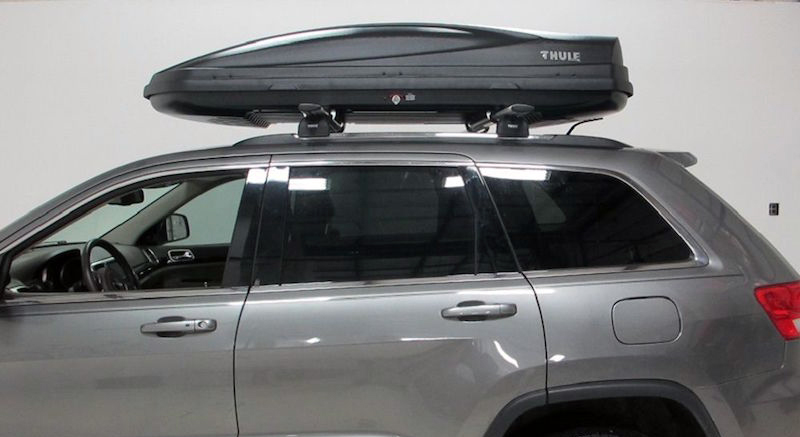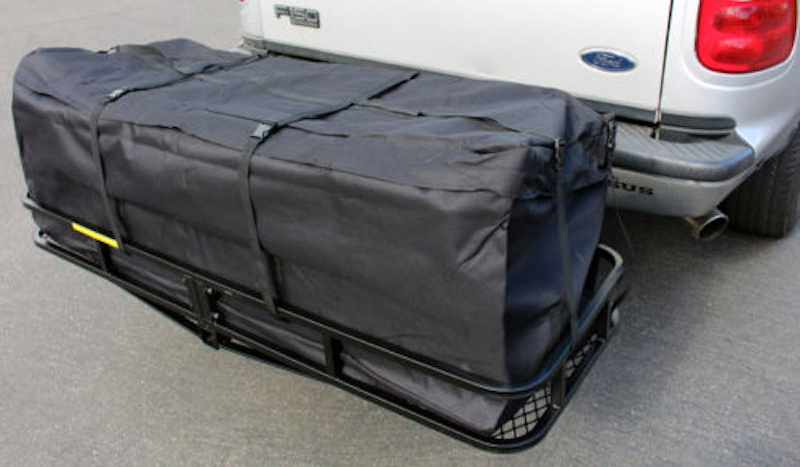If you take long trips, like to go camping or spend weekends on back trails, there will be times when you have more people and stuff than space inside your vehicle. Cargo racks and carriers are the solutions.
There is a multitude of available carriers—with two basic types: those that fit on the roof of your vehicle, and the ones that are fastened to your vehicle’s trailer hitch. Here are some tips on picking the one that’s right for you.
Also see: Cool Cargo Carriers To Consider
Roof Racks and Carriers
Roof racks are the most adaptable solution for carrying extra cargo for cars and SUVs. They consist of a base roof rack that mounts to the roof of the vehicle—and crossbars to which specialty carriers are attached.
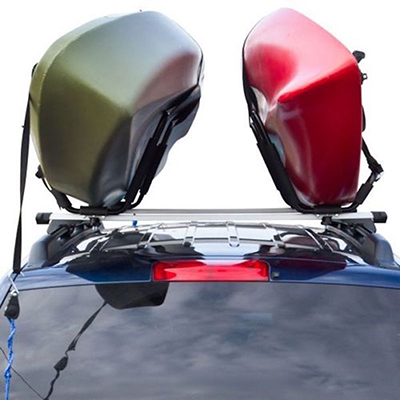
A carrier for canoes and kayaks
Depending on your vehicle, it may already have side rails with or without cross bars. If your vehicle does not have a base rack already attached, it may have attachment points on the roof or on the rain gutters. Even if your vehicle does not have built-in attachment points, there are universal roof racks that will attach to most vehicle roofs. For vehicles manufactured in the last 20 years, there is probably a custom roof-rack solution. All manufacturers of base roof racks have a variety of sizes and attachment styles that are designed specifically for your vehicle.
The specialty carrier is attached to the base rack. There are many types of specialty carriers available today—both open and closed for an assortment of gear, and ones specifically designed for carrying items such as bicycles, skis, snowboards, kayaks, and canoes.
Trailer Hitch Carriers
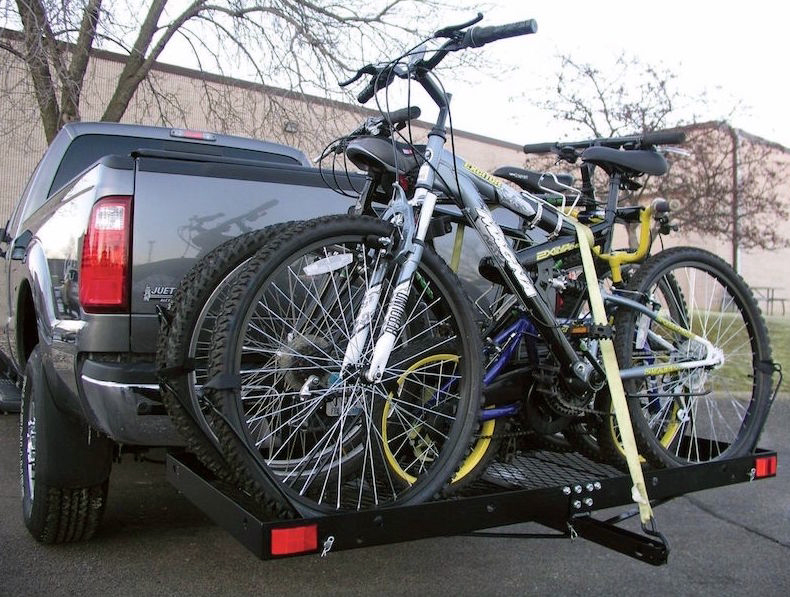
Bicycle carrier
Trailer hitch carriers consist of a platform with a tongue that is secured to the vehicle’s trailer-hitch receiver. The platform, which can be fixed to the hitch receiver or have a swing-away frame, is essentially the same as the base rack on roof carriers. On top of the platform, there are a variety of carriers including cargo boxes, bike carriers, open basket cargo carriers, and fishing rod carriers. Because hitch carriers are mounted on the back of a vehicle, they might block tail lights—so some have lights that connect to the trailer hitch wiring and license plate mounts.
Pros and Cons of Roof Racks
Pros
- Great for items like skis, kayaks, and canoes (that have long or odd dimensions)
- No need for extra tail- or stop-lights
- Most versatile solution, with a larger number of specialty carriers
- Generally, they are more secure and stable and don’t block rear access
- Cargo capacity up to 200 pounds and 20 cubic feet
Cons
- Access to roof carriers may be high up and difficult to reach on large vehicles
- In most cases, they are not compatible with trucks because the cab is not large enough to mount the base rack
- Roof racks cause increased wind resistance, lowering fuel economy
Pros and Cons of Hitch Carriers
Pros
- Good access to gear regardless of vehicle size
- They are generally compatible with trucks
- Rectangular shape offers good flexibility for cargo storage
- Positioned in the vehicle’s slipstream, hitch carriers usually don’t significantly impact fuel economy
- Cargo capacity up to 200 pounds and 16 cubic feet
Cons
- May block taillights, stop lights, and license plate requiring extra lights on the carrier
- Requires a trailer hitch receiver
- Large or long cargo will not fit on a hitch carrier
A large selection of both roof carriers and hitch carriers compatible for just about every vehicle and price range is available on eBay Motors.

